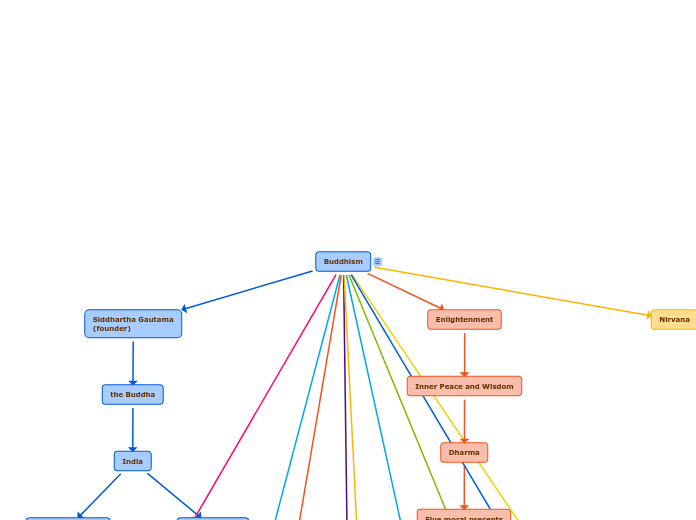Buddhism
Siddhartha Gautama
(founder)
the Buddha
India
Ashoka the Great
Monasteries
Missionaries
Huns invasion
destroyed monasteries
Enlightenment
Inner Peace and Wisdom
Dharma
Five moral precepts
Killing living things
Taking what is not given
Sexual misconduct
Lying
Using drugs/alcohol
Nirvana
way of life/spiritual tradition
avoid self-indulgence/self-denial
Four Noble Truths
karma (law of cause/effect)
reincarnation (continuous cycle of rebirth)
suffering/dukkha
cause of suffering/samudaya
end of suffering/nirhodha
path that frees us from suffering/magga
Worship
temples
home
monks/bhikkhus
Symbols
eight-spoked dharma wheel
Bodhi tree
swastika (well-being, good fortune in Sanskrit)
Lotus Flower
Types
Mahayana Buddhism ("greater vehicle")
China, Japan, Taiwan, Korea, Singapore, Vietnam
Tibetan Buddhism
Tibet, Nepal, Mongolia, Bhutan, Russia, N. India
Theravada Buddhism (traditional teachings)
Thailand, Sri Lanka, Cambodia, Laos, Burma
Eightfold Path
understanding/Samma ditthi
thought/Samma sankappa
speech/Samma vaca
action/Samma kammanta
livelihood/Samma vayama
effort/Samma vayama
mindfulness/Samma sati
concentration/Samma samadhi
Holy Books
Tipitaka (three baskets)
Sutras
The Book of the Dead (Tibetan)
Dalai Lama
(Leading monk in Tibetan)
Holidays
Vesek
Uposatha
Buddhist New Year
